Content
- 1 Bloodworm
- 2 What kind of fish bite on bloodworms
- 3 Types of bloodworms
- 4 Content
- 5 Extraction of masonry
- 6 Growing bloodworms and washing
- 7 Cultivation of bloodworm queens
- 8 Storage
- 9 Breeding bloodworms at home as a business
- 10 Breeding bloodworms at home as a business
- 11 Range
- 12 Breeding larvae at home: premises and conditions of detention
- 13 Technology
- 14 How to grow new producers
- 15 Storage
- 16 Profit and payback
Experienced fishermen know that a good catch depends on the bait. One of the most popular types is fishing bloodworms. In this article, we will figure out how to grow bloodworms for fishing at home.
Bloodworm
Bloodworms are the common name for the worm-like red larvae of the Chironomidae mosquito. This mosquito has several names: tolkunets, dergun. Its name comes from his actions, that is, while he sits, he jerks his legs. An interesting fact is that it does not conceal any danger to humans, that is, it does not bite.
The average length of the bloodworm is 20 mm. But smaller larvae (10-12 mm) are more common. Due to its red color, it can be seen from afar.
What kind of fish bite on bloodworms
Most experienced fishermen know what kind of fish bite bloodworms. After all, it is a versatile and tasty morsel for different types of fish. Indeed, the evidence of fishermen from all over the world will not let you lie that even predatory fish (especially in winter) bite at bloodworms: perch, crucian carp and many other species. What pecks at bloodworms in summer? These are mainly predatory fish - carp, roach, etc.
Types of bloodworms
The types of bloodworms are determined by size:
- large (packed) - large larvae of the dergun mosquito. It is better to get them in the mud of puddles and ponds. You rarely find them in the rivers;
- estuary - lives in southern shallow bays, at the bottom of which there are large deposits of organic matter;
- small - Larvae with a maximum length of 10 mm. The usual habitat is at the bottom of the rivers.
Content
To breed bloodworms, you need a special room, divided into two equal parts and covered with a mesh with fine cells. It must be well heated and well ventilated. The average temperature in the room is from 18 to 150 C. The larvae are able to develop and grow at temperatures up to 350 degrees. But it is worth noting that at low temperatures, their growth slows down, and at elevated temperatures, their skin becomes tender - this interferes with their storage. Another important element is humidity - not less than 70%. Larvae can be kept in large buckets.
Extraction of masonry
Masonry can be found in silt at the bottom of lakes, rivers, ponds. Mostly clutches of mosquito eggs can be found in areas with large deposits of organic matter. There have also been cases when they were found on fishing nets. A good time for mining is winter. During the spring and fall seasons, they can be obtained from a boat. They are not mined in summer.
Growing bloodworms and washing
Growing bloodworms at home is not difficult, you only need silt and egg laying. Masonry can be obtained from fishing nets. Silt will fit from any reservoir, just pour boiling water over it. After the sludge settles in the water, it will need to be drained and poured fresh, already cold. Next, add yeast. Enough 1/100 of the yeast. It will be possible to immerse the clutches of eggs in the silt after a layer of water appears above the settled silt.After a week, the larvae should be fed. Sawdust and dry yeast are what bloodworms eat. Yeast in a batter state is diluted with soil. For every square meter of silt - at least 100 grams of yeast. This is enough for almost two weeks. After that, the larvae are fed again, but with dry yeast. To do this, the feed is sprayed over the surface, before removing excess moisture. By the twentieth day of rearing, the larvae are already ready to go to feed the fish, that is, for fishing.
Another important question is how to wash the bloodworms. When the larvae are ready to pupate (12-15 days after incubation), they must be placed in a mesh drum, which is installed in the rinsing tank. This drum is set in motion and fine sludge particles settle. The cleaned bloodworms are collected in thin cloth bags like gas. After that, they are washed again in clean water. A regular sieve can be used instead of bags. The settled sludge can be collected and reused.
Cultivation of bloodworm queens
Many novice fishermen ask themselves questions: "How to breed bloodworms?" or "How to grow bloodworms at home?" For this, of course, you need mosquito eggs.
As soon as the first signs of the transformation of the larva into the pupa are noticeable, the bloodworms are sold, and the number of insects that serve for the fertilization of the queens are not touched. She will stay in the state of a pupa for 5 days.
A female mosquito emerges from this pupa, the insects at this moment are ready for the appearance of offspring. Feeding and caring for them is not worth it. Mosquitoes grow, reproduce and lay their own eggs. After laying the eggs, the females die, then the cycle repeats.
Storage
When fishing, the larvae are best kept in jars. Holes must be cut on the lids of these cans. A damp cloth lies on the bottom of the jar, on which the larvae lie and are covered with another cloth on top, forming a kind of semblance of a specific “sandwich”. In such conditions, bloodworms can live a little more than 5 days. Also, the larvae can be sprinkled with starch, which makes it easier to get them out of the jar and so that they do not stick together. And it is more convenient to put on the hook. Do not forget about the season of the year, in summer you should protect the jar with larvae from high temperatures, and in winter from low temperatures.
It is recommended to keep bloodworms frozen in winter. Place the larva in a small layer on newspaper or paper and put it in the freezer. After freezing, they do not stick together and serve as a good bait for fish.
In order to preserve the larvae for a longer period, you should:
- Mix the bloodworm larvae with tea leaves and place in a box with holes made in the lid. The box should be put in the refrigerator, the condition of the larvae should be regularly checked and the dead should be removed with tweezers;
- for a long time bloodworms are saved in a jar of water, preferably located in a cold or cool place. Any water can be used. Be sure to pour water into the jar through a sieve. In this case, it is better to enrich the water with oxygen, and this will increase the storage time of the larvae; It is imperative to change the water during storage, as well as rinse the larvae. At first, such a procedure will have to be performed daily, and after that - every three days;
- potatoes are also a great place to store them. To do this, you will need to cut the potato in two and cut the core. Place the larvae mixed with tea leaves in the cut-out hole and refrigerate. Using this storage method, the larvae will live no more than 4 days.
Breeding bloodworms at home as a business
If we consider breeding bloodworms as a business, then this type of activity is characterized by a low budget. To purchase the first batch of larvae, just go to the store. This option is great for a small starting batch. You can also get them yourself at the bottom of any reservoir - this method is preferable for those who need more larvae. We described above how to breed bloodworms at home.
Do not start a bloodworm breeding business on a large scale. At first, you can try with a simple dilution of bloodworms in a bucket. Remember, it all starts small. The main thing is to believe in success.
comments powered by HyperComments
Hello, the topic of today's article is "breeding bloodworms at home." Bloodworms are considered mosquito larvae. Actively used for fishing and feeding aquarium fish... By creating conditions for the development of these insects, you can make a profitable business out of this.
Breeding bloodworms at home as a business
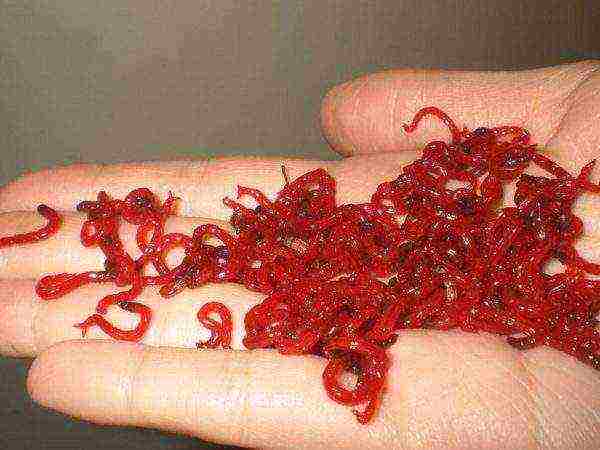
If you believe the search engine, then every day more than 6 thousand people are looking for where to buy bloodworm and its products. Your clients can be not only individuals, but also large enterprises.
The vitamin-rich feed additive will be needed by fisheries, aqua farms and other businesses that are associated with fishing or fish farming.
How the bloodworms are bred at home and where to sell it, we will consider below, and if you want to buy bloodworms for fishing cheap, you can do this in our online store, through the service Feedback.
Types of bloodworms
In nature, there are about 100 species of these insects. If you breed them for sale, it is better to choose Chironomus plumosus. It is easier to keep track of them, they are not particularly demanding to living conditions and are divided into several classes.
Large bloodworm, medium, small and microscopic bloodworm. Each class of larvae has its own price. It is quite natural that a large bloodworm is valued more than a microscopic analogue.
Before you start breeding larvae, think about who you will sell them to. Initially, you need to do market monitoring, talk to fish farms, shops and fish breeders... You must know what kind of bloodworm will be in demand. Ideally, if you have clients before you start your work.
Growing bloodworms for fishing
Working at the level of large-scale production requires investment and free space. While you are just creating a business and have not decided what volumes of goods you need, you can use a room in a house or in an apartment as a room.
The room is divided into 2 parts by a grid with fine cells. Adult mosquitoes and larvae should not come into contact with each other. In addition, you need to make sure that insects from the street do not fly into the makeshift nursery.
If in the early stages of work it seems difficult to grow larvae, you can start a business from a different approach. The larvae are found in water bodies, so they can be washed by taking them from the bottom with a metal scoop.
In the room where the larvae grow, there must be air humidity in the region of 70%, water, good ventilation and the ability to maintain an optimal temperature. The air in the room should be warmed up by no lower than 16 degrees Celsius.
Bloodworms can grow in cold weather, but at the same time it will be small, and its body is fragile. This material is not suitable for transportation, so keep the temperature normal. You can ignore the lighting, the main thing is that you feel comfortable. Mosquito larvae can calmly develop in the dark.
How to grow bloodworms at home
All the work of growing bloodworms can be divided into two parts. Eggs should appear first, then the larvae, they are raised to the point where they are about to turn into pupae. Have you identified a period of active growth? It is necessary to immediately prepare the material for sale so that it does not have time to deteriorate.
We get mosquito eggs and larvae
In the room, you need to create optimal conditions and put a container with water, no more than 3 centimeters. Female mosquitoes will lay their eggs in the water and die immediately. You don't have to worry about getting hit by a flock of mosquitoes when you come for the eggs.
The water can be painted yellow, mosquitoes love marsh conditions. Next, we put the resulting eggs directly in the container in another container with a small amount of water.Leave the container on special shelves for 3 days.
This time is enough for the larvae to appear. Next, sort the resulting material. 10% of the total mass of the larvae should remain in the same room. They will become queens for further egg production.
Transfer the rest of the larvae to another part of the room, where they will develop to the state of a bloodworm.
Growing a bloodworm larva
For work, you will need a special container with a side height of about 3 centimeters. Then you need to pour over the sludge with hot water and put it in a container. In such an environment, the larvae will develop.
Yeast is perfect as a feed; it is diluted in warm water and mixed with dirt in trays. It is imperative to monitor the room temperature. If it did not meet the requirements of the cultivation technology, then the larvae are fed every 3 days.
Under normal conditions, feeding for bloodworms is arranged every 14 days. Pay attention to the amount of yeast, if there is a lot of it, then your nursery will rot. Two weeks after the meal, the larvae need to be fed again. This time dry yeast is used for this purpose.
Bloodworm grows pretty quickly. The development cycle from egg to normal larva takes half a month. Further, the dirt is separated from the bloodworm.
To do this, you can put a portion of the dirt with the larvae on a sieve and rinse with running water. Sludge is sifted through the cells, but bloodworms remain. It is collected in special bags and then washed again with water.
The mud that has settled on the bottom can be used again when growing a new generation of bloodworms. When creating a mini production, calculate the amount of future goods. These numbers determine how much space and resources you need to implement your idea.
How to grow bloodworm queens
The new bloodworm rearing cycle requires mosquito eggs. Raising queens is easier than catching them with a net on the street. The stage of growing mosquitoes is no different from the process of obtaining bloodworms.
The difference is that at the first signs of the transformation of the larva into a pupa, bloodworms are sold, and the volume of insects left for the development of queens is not touched. When the larva becomes a pupa, it will stay in this state for a maximum of 5 days.
Then a female mosquito will appear, the insects are already ready for the appearance of offspring. There is no need to feed them. Mosquitoes grow up over several days, mate and lay eggs. After laying, the females die and the cycle repeats from the beginning.
How to store bloodworm larvae
Bloodworms can live even after being completely frozen. But, there are conditions under which the larvae do not survive and it is necessary to monitor the storage of insects. If the bloodworm dies, then it can no longer be used, neither as food, nor as bait for fishing.
How to store the larvae obtained so that they remain alive until the sale? There are several options for storing insects:
- put the bloodworms in a gas bag or nylon stocking and dip them into the toilet cistern;
- larvae are well preserved in frozen form. Before selling the bloodworm, it is worth defrosting the bay with running water, and after defrosting, all excess liquid must be drained;
- if the larvae are few, they can be stored in wet moss. To do this, take a pallet, put wet moss there, and pour a thin layer of bloodworms on top. The container with insects is placed in a cool place. Make sure that the larvae do not crawl, the container should be with high sides;
- bloodworms can be stored in a box of water. To do this, put water in a plastic box; a cat's litter box may also be suitable for this. Then place a fine mesh on top, and sprinkle bloodworms on the mesh. In this state, the larvae will remain alive for a long time;
- provided that the temperature in the room does not drop below zero degrees, you can freeze bloodworms in a damp rag or piece of cloth;
- if the bloodworm is wrapped in a newspaper soaked in water, it can be safely stored in the refrigerator. Choose a bottom shelf for storage.
How to make bloodworm farming a profitable business
An insect farming business can be started without investment. The first bloodworm is easy to find in a pond and wash up from dirt. Then you can use your own house or apartment as a nursery. One room is enough for a farm.
Calculate how much resources will be spent on creating normal conditions for the development of larvae. Pay key attention to finding distribution channels. You need to know where and how much you will sell the product.
When there is already an agreement, it is much easier to work. It takes half a month to grow a batch of bloodworms. If you think over everything, then in 30 days you will receive 2 income. The amount received for the work directly depends on who you agreed with and on what terms bloodworms are bought from you.
The average cost of larvae may vary. When growing insects in a room with equipment and optimal conditions, the cost will be at least 60 rubles.
Growing bloodworms in your home will increase the cost of larvae to 130 rubles per kilogram. In both situations, doing this business is beneficial. You can sell bloodworms for at least 350 rubles. The highest price for larvae is 3000 rubles per kilogram.
The price tag is influenced by the region where you work and where you are thinking to sell the product. For example, a bloodworm in Moscow and the region will have a price of 60% than in Samara or another region far from the center.
What matters is the presentation of insects, their size and quality. It is important to adhere to the technology of growing insects, it helps to get a quality product without wasting resources. You can rent bloodworms to wholesalers at a price of about 1,000 rubles per kilogram. Good money is made by reselling a product.
If you have distribution channels but don't want to mess with growing bloodworms, you can build a customer base and become an intermediary. The larvae grow quite quickly, only yeast is needed to feed them.
The cost of keeping the larvae will be insignificant, at a time when the profit increases several times. There is little competition in this area as many breeders feed the fish. chemical feed.
In the case when it turns out to agree on the supply of bloodworms, you will have regular customers, and therefore a stable income.
We hope you enjoyed the article "Breeding bloodworms at home"!
Bloodworms, or chironomid larvae, are not only a classic fishing attribute, but also a popular food for aquarium fish. More than 7 thousand people who want to buy bloodworms appear on the Internet every day - this is the statistics of search queries. In addition to fishermen, the larvae are massively purchased by aqua farms and fishing shops - the market volume is quite large. At the same time, breeding bloodworms as a business does not require significant costs, and distribution channels can be established in other regions, and even countries. How to properly start a business based on growing and selling larvae at home?
Range
Before you start growing bloodworms for sale, it is recommended that you decide on the main assortment of the farm. Today there are about 100 species of mosquito larvae, but they prefer to breed at home Chironomus plumosus... The larvae are classified into several groups by size:
- Large;
- Average;
- Small;
- Especially small.
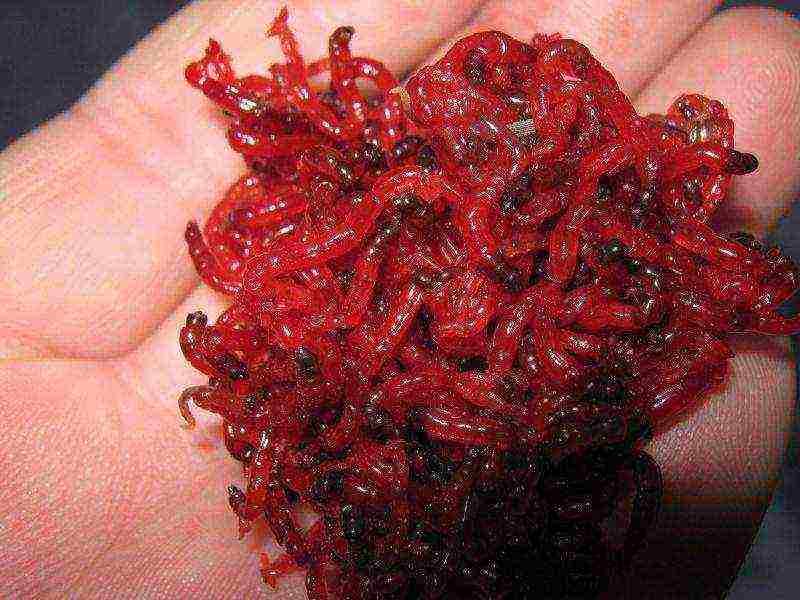
The most common bloodworm size among fishermen is large. Aqua farms and aquarists prefer small larvae.
The assortment in the form of medium and very small bloodworms is considered specific. For the expediency of growing such species it is worth establishing sales channels in advance... Otherwise, this size will not bring the desired productivity to the business.
Breeding larvae at home: premises and conditions of detention
In order to organize a business on a bloodworm, it is not necessary to rent a special room. Beginners can try wash the larvae in the nearest body of water or a pond - for this it is enough to arm yourself with a bucket or a homemade scoop.
For self-cultivation of bloodworms from eggs, two workshops will be required - for adults and for newly hatched insects. But for small volumes of production, a free room in an ordinary apartment will be enough.
It is necessary to divide the room into two parts using a fine mesh so that adult mosquitoes do not have free access to the hatched larvae. Mosquito nets will be required on the windows - extraneous mosquitoes or other insects should not enter the room from the street.
The mini-farm needs communications - heating, ventilation and water. The constant temperature in the room should be at a level 18-20 degrees Celsius. Insects are able to grow at low temperatures., but then their development slows down, and the little bodies become too fragile for transportation. The room is kept level humidity about 70%... The bloodworm does not need special lighting conditions - it can grow in complete darkness.
Technology
How to grow bloodworms for sale? The whole process of breeding larvae is divided into two main stages. The first is obtaining eggs, from which young individuals subsequently appear. The second stage is the rearing of the larvae until they are ready for pupation.
Growing from eggs
First, you need to grow bloodworms from eggs. For this, small containers of water are left in the mosquito room. The water should be clean, but you can color it yellow - mosquitoes prefer it. The height of the water layer in the container should not exceed 2-3 cm... low basins with sides of 4-5 cm are suitable as containers. After the mosquitoes lay their eggs, they will die.
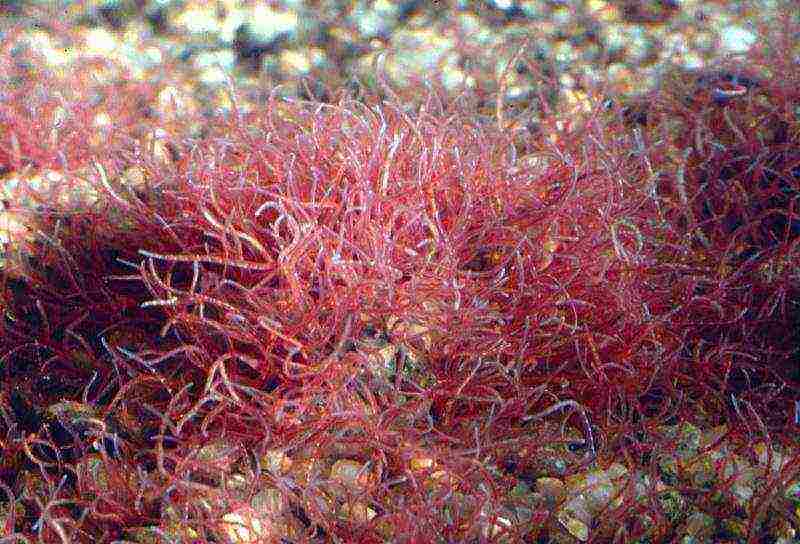
The cost of production for sale will be from 80 rubles per kilogram when grown in an apartment.
The clutches are moved into low cuvettes with a thin layer of water. The height of the sides of the containers does not exceed 30 mm, the water layer is not more than 10 mm... Clutches are placed at the rate of 500 eggs per square centimeter of the cuvette. To save space, containers can be placed vertically in racks. After 2-3 days, bloodworm larvae will hatch from the eggs. The main part of the individuals is transferred to the growing room, one tenth is left for breeding as future brood queens.
Growing and washing
After the incubation period is over, 90% of the larvae are distributed indoors for later development. To do this, insects are placed in trays about 3 cm high, the cuvettes are filled with silt, previously washed and treated with boiling water.

No more than 100-150 clutches should be placed on one square meter of silt.
The best foraging environment for newly hatched bloodworms is water diluted yeast... In the state of a liquid dough, the food is diluted with soil in a cuvette before placing the masonry in them. For every square meter of sludge, at least 100 grams of yeast is required. This feeding medium will be enough for almost two weeks, after which it is worth feeding the larvae again, but already dry yeast... For this, the feed is sprayed over the surface of the cuvettes, after removing excess moisture from them.
It is necessary to monitor the conditions of keeping the larvae. Sludge in the cuvettes must not be allowed to dry out. You should also pay attention to the temperature, if it exceeds 20-22 degrees Celsius, then they are more careful with food. Too much yeast can lead to the formation of putrefactive processes.
If the temperature in the room does not correspond to the recommended conditions, then it is better to add food every 3 days from the very beginning.
Let's figure it out how to wash bloodworms at home... As soon as the larvae are ready to pupate (under normal conditions this occurs within 12-15 days after incubation), the insects are placed in a mesh drum installed in the rinsing tank. The drum is set in motion, during which fine sludge particles settle. The cleaned bloodworms are collected in gas cloth bags.... After that, they are washed again in clean water.A regular sieve is often used instead of bags.Settled sludge can be collected and reused.
This completes the breeding cycle of bloodworms at home. The video and photographic materials posted in this article clearly demonstrate the processes of washing the adult larvae and their subsequent storage.
How to grow new producers
Laying aside the clutch, the mosquitoes die. Therefore, it is necessary to leave 10-15% of the hatched larvae for growing new queens. To do this, the same care is taken for the bloodworms as for the insects for sale, only the pallets with the larvae need to be kept in a separate room.
In order for individuals to reach the adult stage, pupation is not prevented.... The mosquito will spend about 3 days in the pupal stage, after which the insects hatch, and within 2-3 days they become ready to mate and lay eggs. There is no need to feed mosquitoes - they do not feed on anything and live no more than 3-5 days.
Storage
Until the moment of sale, the larvae must be preserved. A feature of chironomid larvae is their ability to remain alive even when completely frozen. At the same time, mosquito larvae are very delicate and fragile, and if stored improperly can die. Dead bloodworms are no longer suitable for use as feed or bait.
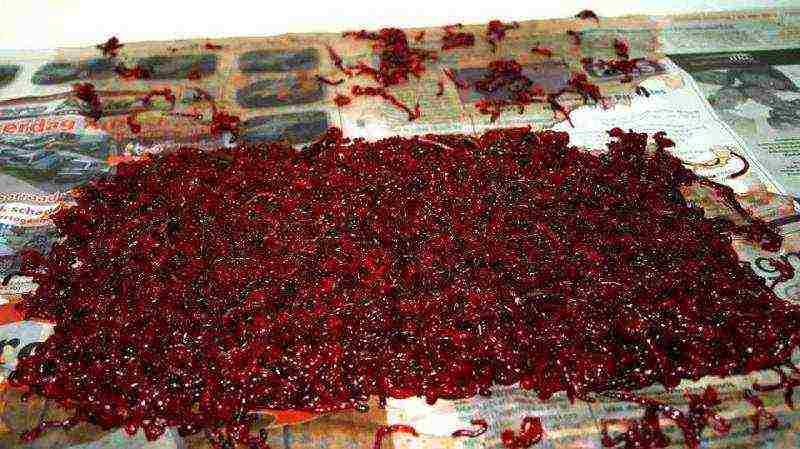
When storing in fabric, it is impossible to allow too low temperatures, the recommended mode is not lower than zero degrees Celsius.
How to store bloodworms at home? There are many ways:
- For a long time, bloodworms are stored in the freezer, after which they are defrosted under running water;
- The larvae can be kept alive in the moss by covering any container with it and placing it in the refrigerator in the lower compartment;
- The bloodworms are perfectly preserved in the toilet cistern, placed in nylon stockings or gas bags;
- You can use a ten-liter container. Bloodworms are placed in it in layers, alternating with silt or river grass. The container should be placed in a damp, cool room. The optimal temperature regime is 2-8 degrees below zero;
For storage of larvae, a damp cloth or foam rubber soaked in water is also used. The material can be placed in a box or glass jar, which is then placed in the refrigerator on the bottom shelf.
Profit and payback
To calculate the cost of a bloodworm ready for sale, it is necessary to take into account the costs of communications and the fodder base. To grow 1 kg of larvae, you will need up to 500 grams of yeast. The wholesale price according to data for 2016 is from 50 to 85 rubles / kilogram.
The cost of production for sale will be from 80 rubles per kilogram when grown in an apartment. At the same time, the average cost of bloodworms fluctuates within 1000 rubles, although in different regions the price range reaches a minimum of 300 rubles and a maximum of 3000 rubles.
One way or another, minimal investment in production is required, and the costs are recouped in the first month, and several times over. Given the low competition in the market and high demand, how the business of selling bloodworms is promising and profitable direction.
2 parts: Creating favorable conditions for the development of mosquito larvae (bloodworms) Feeding fish with bloodworms
Some types of aquarium fish need to be fed live food, which is often more expensive than using dry food in the form of flakes or pellets. In addition, if you want to breed fish, then during the spawning period, they also need to be fed with live food. Regardless of why you decide to use live food, growing it yourself can sometimes be a more convenient and cheaper alternative to purchasing such food at a pet store. It is quite easy to grow bloodworms (mosquito larvae), while it will serve your fish with nutritious and, which is also important, completely free food! All you need is a container for water, as well as a little patience and care.
Part 1 Creation of favorable conditions for the development of mosquito larvae (bloodworms)
-
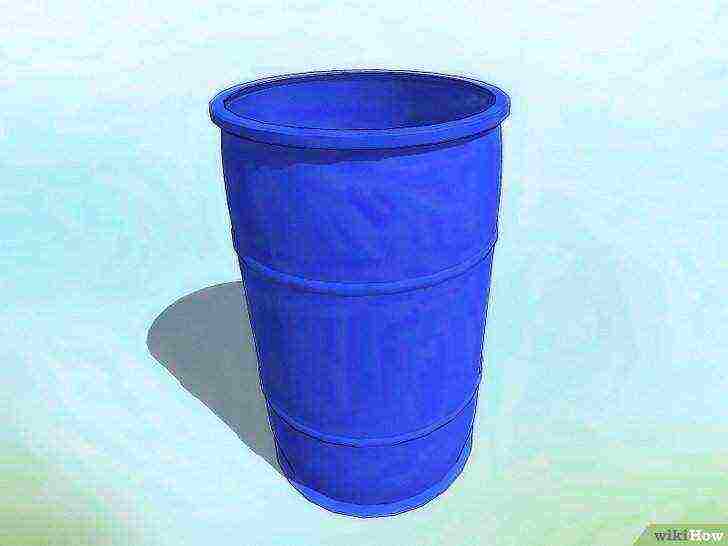 Obtain a container for water.
Obtain a container for water.
As a container for growing bloodworms, you can take a wide variety of containers. A larger container will allow you to grow more bloodworms, but remember that bloodworms that are not fed to fish will eventually turn into mosquitoes that fly in your garden. Be sure to use a clean or washed food-safe container. Do not take old containers from paint, resin and other chemicals that can poison algae or the bloodworm itself.
- For example, a 20-liter bucket is a good choice, but if you are going to feed a lot of fish, you can take a larger container - a 200-liter barrel.
- That being said, a one-liter container can provide enough bloodworms for most small aquarium owners.
-
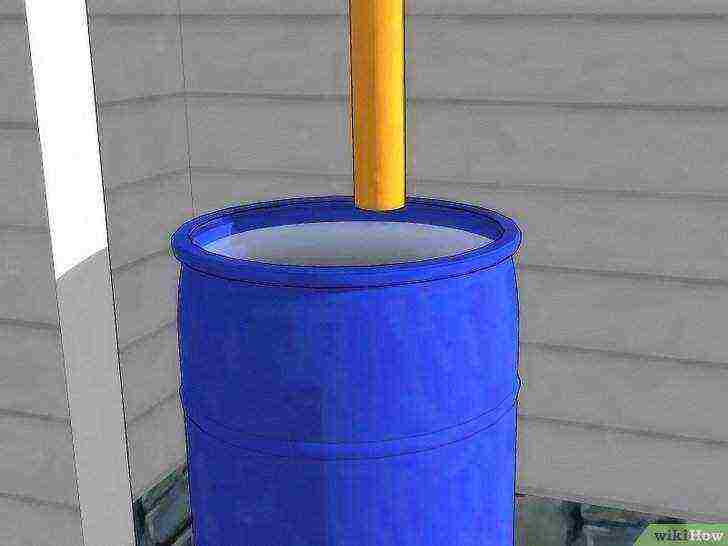 Fill the container with water.
Fill the container with water.
In clean water, mosquito larvae often lack essential nutrients to survive. If you allow the container to fill with rainwater, conditions will be created in it that will be more favorable for the grown bloodworm. However, it is sometimes inconvenient to wait so long for the container to fill itself with rainwater. If you decide to use tap water, be sure to treat it so that it is safe for the larvae. Otherwise, chlorine will inhibit the growth of algae, which are the main food source for bloodworms.
- Do not pick up various debris that accidentally fall into the water. It will promote the growth of bacteria that mosquito larvae also feed on.
- Treat tap water with a dechlorinating agent to neutralize the chlorine it contains.
- Special dechlorinating water conditioners are available at pet stores or aquarium stores.
-
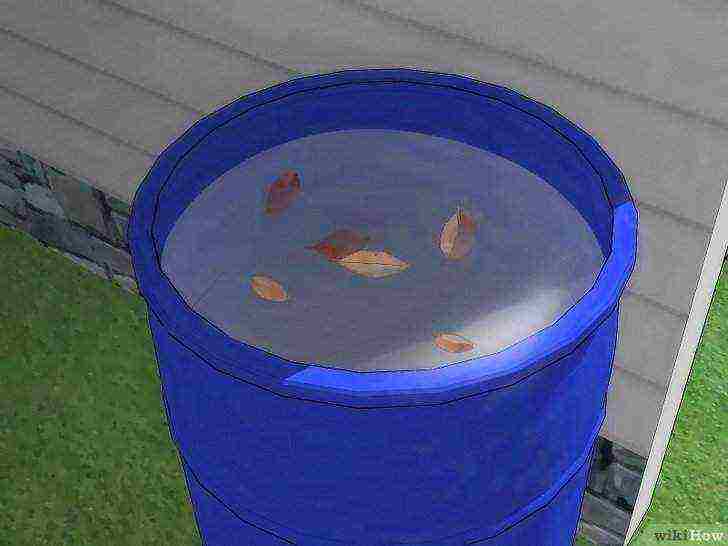 Place a container of water in a shady place.
Place a container of water in a shady place.
Mosquitoes love dirty water and shade. Do not place the bloodworm breeding container in direct sun, as the water may become too warm for larvae to survive on hot days. While you carry the container to its designated place, some water may spill, but for a successful outcome, the container does not need to be full to the brim.
- Place the container under a shelter or spreading tree to keep it out of the sun.
- It's okay if sometimes the scattered rays of the sun still get to the container. However, this should not happen for more than half of the day.
-
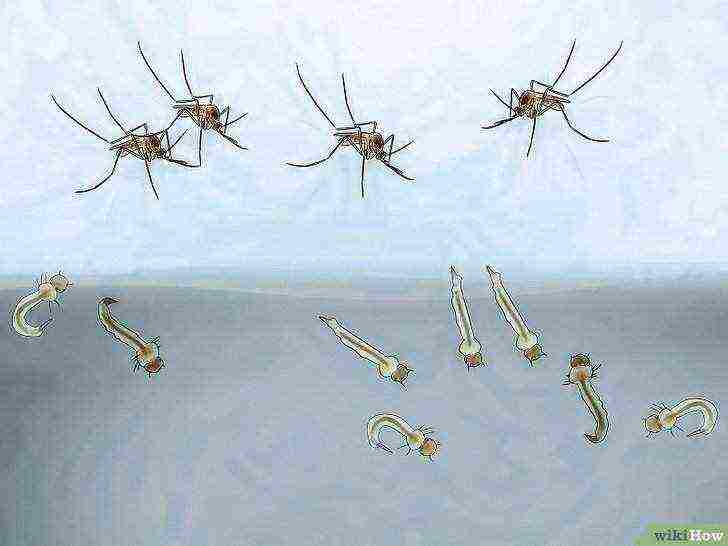 Wait for the mosquitoes to lay their eggs in the water.
Wait for the mosquitoes to lay their eggs in the water.
Since live bloodworms are not sold very often in stores, you will have to wait for the mosquitoes to arrive and lay their eggs in the water you have prepared. Depending on where you live, this can happen during the spring or summer months. Chances are, after a week or two, you will be able to spot mosquito eggs in the water.
- Mosquito eggs look like miniature floating rafts of brown grains stuck together. They usually turn into larvae after 48 hours.
- The larva hatched from the egg looks like the abdomen of an insect with two antennae. It is the hatched mosquito larvae that is called the bloodworm, which is used to feed the fish.
- If no eggs appear in the water container after 1 to 2 weeks, consider moving it to a more suitable location in your garden. The water in the container can either overheat (with excess sunlight) or overcool.
Part 2 Feeding fish with bloodworms
-
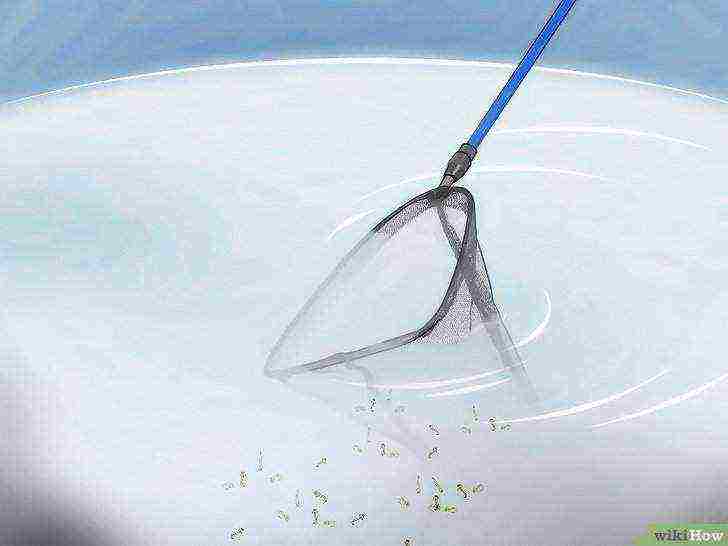 Use a pipette or small net to catch bloodworms.
Use a pipette or small net to catch bloodworms.
Mosquito larvae are very small, so it will be useful to catch them with a small landing net designed for the smallest aquatic organisms. A net for brine shrimp is quite suitable for you. Also, for individual catching of individual larvae or for catching eggs and larvae from the water in small groups, you can take a pipette.
- Try to send bloodworms or mosquito eggs directly to your aquarium immediately after catching so that the fish can eat live food.
- Pouring water from a container with bloodworms into the aquarium is not recommended, as it can introduce unwanted algae and dirt.
-
 Introduce mosquito eggs that have not yet hatched into the aquarium.
Introduce mosquito eggs that have not yet hatched into the aquarium.
Most fish will not immediately pay attention to unremarkable accumulations of eggs, but will gladly attack them when the larvae begin to hatch from there. Using mosquito eggs to feed your fish is the surest way to keep mosquito populations from growing in your garden.
- Even if the fish eat the eggs before the larvae appear, there is nothing to worry about.
- However, eggs mature in 48 hours, so you may not always be able to catch them in time for your fish.
-
 Feed the captured larvae to the fish.
Feed the captured larvae to the fish.
Usually, it will be easier for you to find the hatched larvae in the bloodworm container, rather than the eggs themselves, which ripen very quickly. Bloodworms very often float to the surface of the water to breathe. As the larvae grow up, they periodically shed the old skin that has become tight. Pisces prefer not to eat it.
- The larvae have noticeable antennae, which are actually the tubes of the breathing siphon.
- The larva, which has entered the pupal stage, is characterized by a grown head and stops feeding on algae. Pupae can also be fed to fish, but otherwise they must be drained into the sewer so that they do not have time to turn into mosquitoes.
-
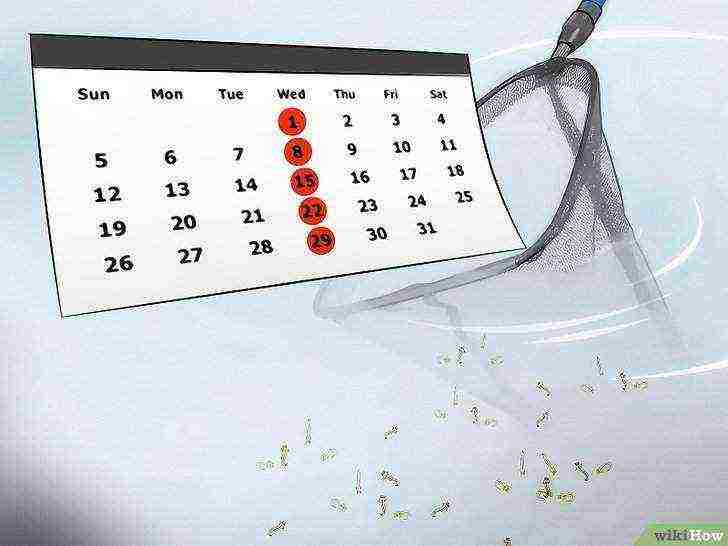 Harvest bloodworms weekly.
Harvest bloodworms weekly.
Even if there are so many bloodworms that it is impossible to feed the fish completely, it is very important to catch the developing larvae from the container on a weekly basis. Depending on the specific conditions, mosquito larvae can develop into adult flying parasites in as little as four days or take up to two weeks to do this.
- In order not to breed a huge swarm of mosquitoes in your garden, those larvae that will not be fed to the fish must be drained along with the water into the sewer.
- If you pour the water with the larvae right in your garden, it may not prevent them from turning into mosquitoes.
-
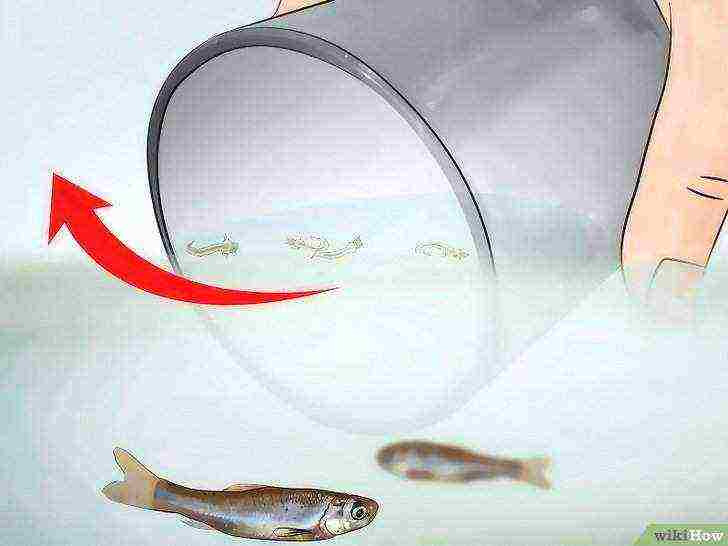 Remember to remove dead larvae from the water.
Remember to remove dead larvae from the water.
Fish will likely refuse to eat dead larvae, so if you find any, drain them along with the old water, which you should renew weekly. If all the larvae in the container die, then there is a problem with the temperature or quality of the water.
- When using tap water to grow bloodworms, some chlorine may still remain in the water, which is harmful to the larvae.
- If at some point in the day a container of water is exposed to direct sunlight, then the water in it may become too hot for the larvae to survive.
Article Information
This page has been viewed 21,906 times.
Was this helpful?


